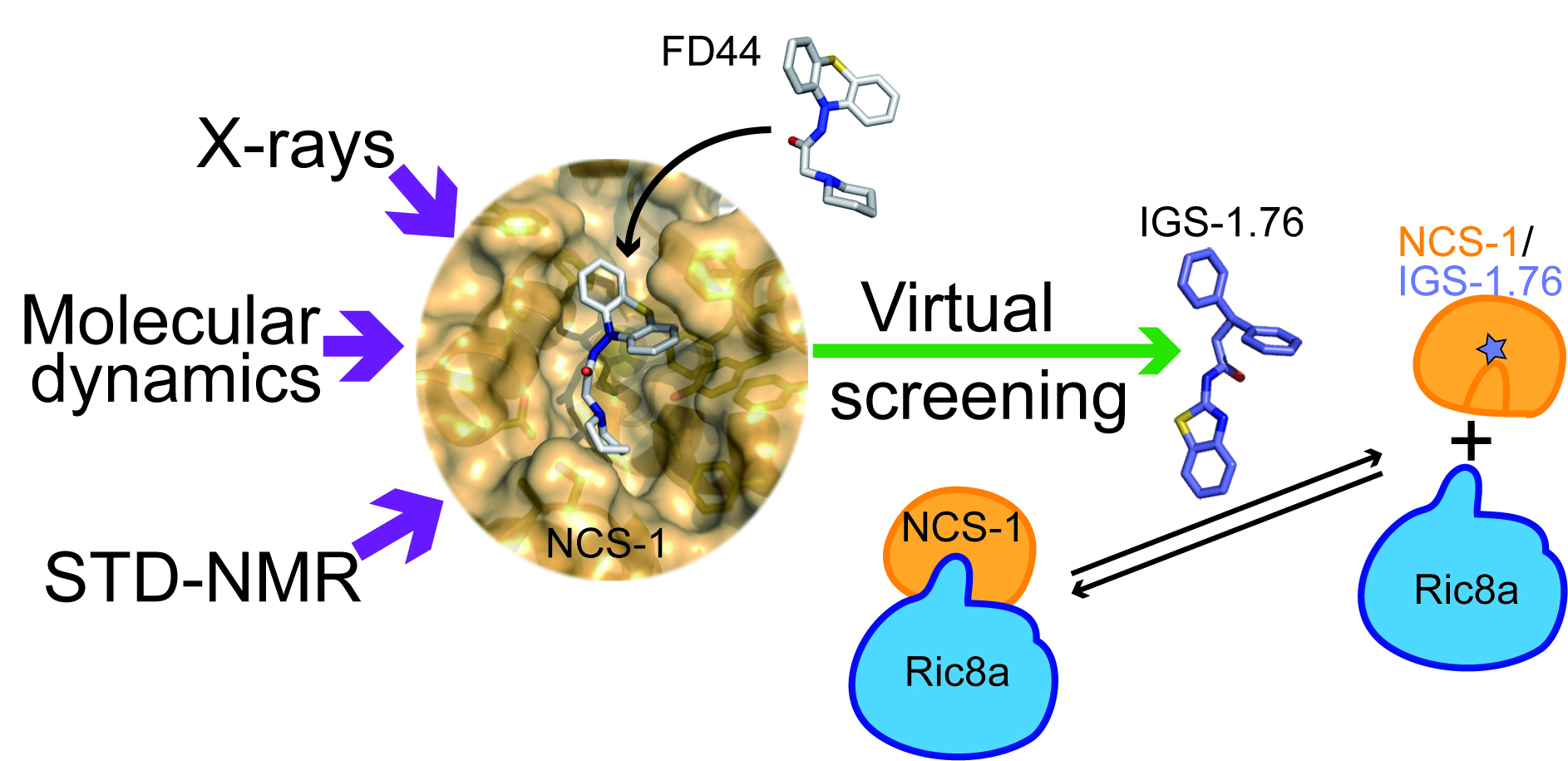
A multidisciplinary work published in the Journal of Medicinal Chemistry with the participation of several groups at Centro de Investigaciones Biológicas and led by Dr. Nuria E. Campillo, presents the discovery of a promising drug-like molecule, named IGS-1.76 which acts as an inhibitor of the protein-protein interactions (PPI) established between the neuronal calcium sensor 1 (NCS-1) and the guanine exchange factor Ric8a. This system is involved in the regulation of the synapse function on synaptopathies such as the Fragile X syndrome (FXS) and appears to be an emerging druggable interface promising in the search for efficient compounds.
In a previous publication in the journal PNAS by the same research group, the authors identified the phenothiazine FD44 as an inhibitor of this PPI which decreases the abnormally high synapse number and enhances associative learning in a FXS animal model. Now, the integration of advanced experimental and computational studies, have allowed Roca et al. to obtain important structural insights into Drosophila NCS-1/FD44 recognition to understand the basis of its affinity and specificity and generate improved PPI regulators.
Following this multidisciplinary protocol, the molecule IGS-1.76 was identified by computational studies, which has been shown to efficiently inhibit the human NCS-1/Ric8a complex with an improved binding potency. The crystal structure of the Drosophila NCS-1/IGS-1.76 complex demonstrates that the new inhibitor, although chemically different to FD44, shares the same mechanism of action. Moreover, the crystallographic diffraction studies together with molecular dynamics simulations and STD-NMR data confirm the target residues to disrupt the interaction between NCS-1 and Ric8a.
All these data together make IGS-1.76 a promising new hit to be optimized as a potential drug candidate for Fragile X syndrome pharmacotherapy.
References:
(1) Deciphering the inhibition of the neuronal calcium sensor 1 and the guanine exchange factor Ric8a with a small phenothiazine molecule for the rational generation of therapeutic synapse function regulators. Carlos Roca, Loreto Martinez-Gonzalez, Miguel Daniel-Mozo, Javier Sastre, Lourdes Infantes, Alicia Mansilla, Antonio Chaves-Sanjuan, Juana Maria González Rubio, Carmen Gil, Francisco Javier Cañada, Ana Martínez, Maria Jose Sanchez-Barrena, and Nuria E. Campillo. Journal of Medicinal Chemistry (2018). DOI: 10.1021/acs.jmedchem.8b00088
(2) Interference of the complex between NCS-1 and Ric8a with phenothiazines regulates synaptic function and is an approach for fragile X syndrome. Alicia Mansilla, Antonio Chaves-Sanjuan, Nuria E. Campillo, Ourania Semelidou, Loreto Martínez-González, Lourdes Infantes, Juana María González-Rubio, Carmen Gil, Santiago Conde, Efthimios M. C. Skoulakis, Alberto Ferrús, Ana Martínez, and María José Sánchez-Barrena. PNAS (2017) 114 (6) E999-E1008. DOI: 10.1073/pnas.1611089114

